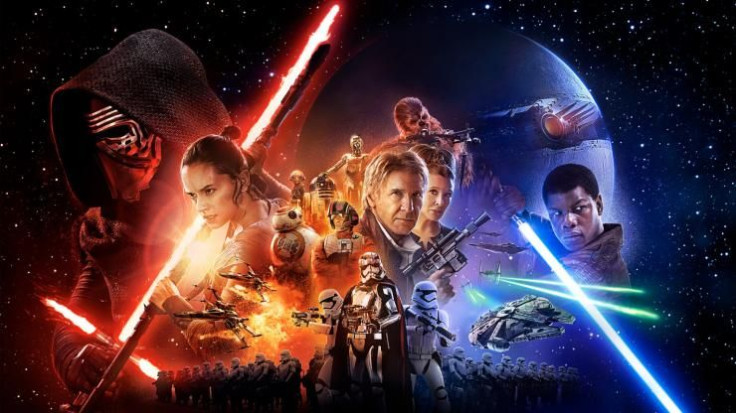'Star Wars: The Force Awakens' Winks At Its Predecessors Without Ripping Off What Made Them Great [SPOILER-FREE REVIEW]

Perhaps no director has been under more pressure to succeed than J.J. Abrams, with “Star Wars: The Force Awakens,” the first direct sequel to the original trilogy in thirty-two years. But despite the vast room for failure, Abrams manages to defy the odds and create what can only be considered a symphony of beautiful imagery and plot points that’s sure to satisfy, if not exceed, audience expectations.
The first thing to note about “Episode 7” is the fact that it mirrors the original 1977 movie in story structure. However, that doesn’t mean “The Force Awakens” is just a ripoff of the original movie. Abrams makes sure that each of his nostalgic winks to the source material is given new life. No new character can be considered the younger version of Han Solo (Harrison Ford), and Leia (Carrie Fisher) does not pass any kind of proverbial torch to the new film’s female protagonist, Rey (Daisy Ridley). Instead, characters and events are fleshed out to stand alone as part of this brand-new adventure.
As for the new characters, they’re incredible -- but that’s the easy part. What makes the movie work is not just the strong and complicated people, but the juggling of their individual arcs. By contrast, “Star Wars: A New Hope,” was really about the journey of one man, Luke Skywalker (Mark Hamill). Mentioning that is not an effort to dilute the importance of characters like Solo and Leia. Instead, it’s an acknowledgment of how much deeper the new movie goes than its predecessor did.
While franchise creator George Lucas shouldn’t be faulted for limiting his movie to just one main arc, Abrams takes the baton that Lucas (with inspiration from Joseph Campbell) handed him and runs with it in the most impressive way. The movie manages to give each character -- new, old, hero, villain -- a complete story arc, full of trials, and spit them back out of the other end having completely changed -- some for the better, others not so much.
When it comes to the new characters’ relationship to one another, that’s where the movie’s well-paced adventure comes into play. What made the original films work so well was the fact that they were a group of ordinary people who tripped and fell into the most epic and important roles in the entire galaxy. Abrams does something similar with the film’s principal new heroes Finn (John Boyega) and Rey. They’re not from the same background and they’re not fighting for the same purpose. However, they’re bound through this adventure and, by the end, become important to a larger cause. It’s very easy for audience members to project themselves onto these ordinary people and feel as though they’re taking a heroic journey as well.
One interesting social issue the film takes on is a concept often called “white-knighting.” For those unfamiliar, it is when a man feels compelled to rush in and rescue a woman in peril, regardless of whether she needs his help. While “The Force Awakens” won’t go down in history as a "political movie," it subtly plants the idea in a younger generation’s head that the women on one’s team are not burdens, but valuable assets.
When all is said and done, “Star Wars: The Force Awakens” lives up to the majesty of the original movies. In fact, its nostalgic homages and new character arcs fit almost perfectly into the blueprint of Lucas’ original film -- and its ability to do these things amid such high expectations allows this film to sit comfortably within the “Star Wars” canon, unlike the much-maligned "prequel trilogy" films.
For sure, “The Force Awakens” will satisfy both diehard “Star Wars” fans and an entirely new generation of young moviegoers just waiting to unlock the world of science fiction, the hero’s journey and, of course, the Force.
© Copyright IBTimes 2025. All rights reserved.






















